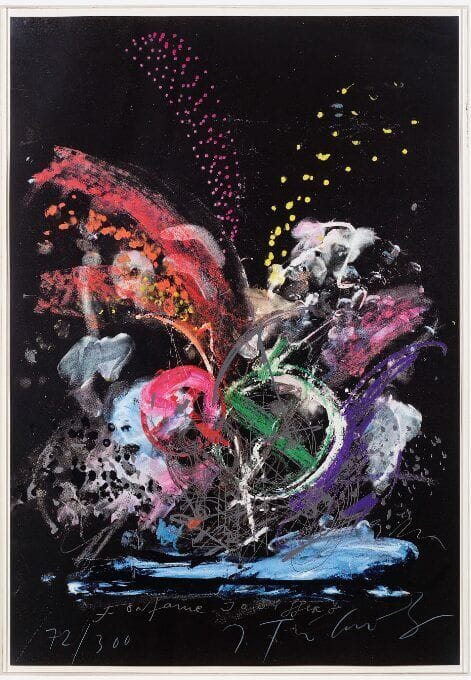Tinguely Jean
Jean Tinguely was born on May 22, 1925, in Fribourg, Switzerland. By the late 1930s, he had already started exploring his passion for motion in art by creating hanging sculptures powered by motors. This innovative approach laid the groundwork for what he would later term “Méta-Malevich.” From 1941 to 1945, Tinguely attended the Allgemeine Gewerbeschule Basel, where he studied under Julia Ris. During this period, he discovered the Dadaist works of Kurt Schwitters, which profoundly influenced his artistic direction.
Tinguely initially dabbled in Surrealist painting but soon abandoned it in favor of sculpture, captivated by the potential of self-propelled motion. In 1953, alongside Romanian artist Daniel Spoerri, he conceptualized the Autothéâtre (Automatic Theater), a performance featuring a mechanical stage that moved objects and shapes without human intervention. His creations, combining junk sculpture with kinetics, reflected a whimsical and ironic Dadaist influence.
In the late 1950s, Tinguely crafted the Meta-Matics, a series of automatic drawing machines that used chalk or markers to create abstract art. His sculptures often invited audience interaction, engaging viewers to activate their movement. A key figure in the Nouveaux Réalistes (New Realists), he signed their manifesto in October 1960.
His acclaimed works include “Homage to New York” (1960), a self-destructing sculpture showcased at the Museum of Modern Art in New York. Although it didn’t completely destroy itself, it highlighted Tinguely’s fascination with the ephemeral nature of art. Another iconic collaboration was the Stravinsky Fountain (1983) in Paris, created with his wife Niki de Saint-Phalle, featuring 16 mechanical birds with unpredictable water-spouting movements.
Tinguely participated in significant exhibitions such as Le mouvement (1955) and Vitesse pure et stabilité monochrome (1958). His performances, including Study for an End of the World, no. 1 and no. 2, further defined his legacy in kinetic and performance art. Retrospectives at the Tate Gallery (1982) and Palazzo Grassi (1987) celebrated his contributions to modern art.
Tinguely passed away on August 30, 1991, in Bern, leaving behind a legacy of innovation and interaction in the art world. The Museum Tinguely, dedicated to his work, opened in Basel in 1996, ensuring his pioneering spirit continues to inspire future generations.
Fontaine Jo Siffert (From the Eight by Eight to Celebrate the Temporary Contemporary portfolio, 1984)
